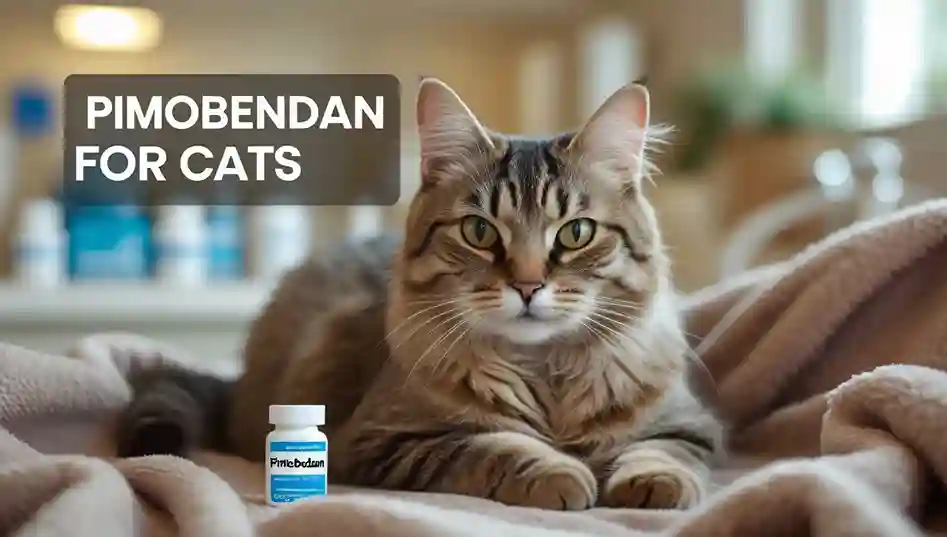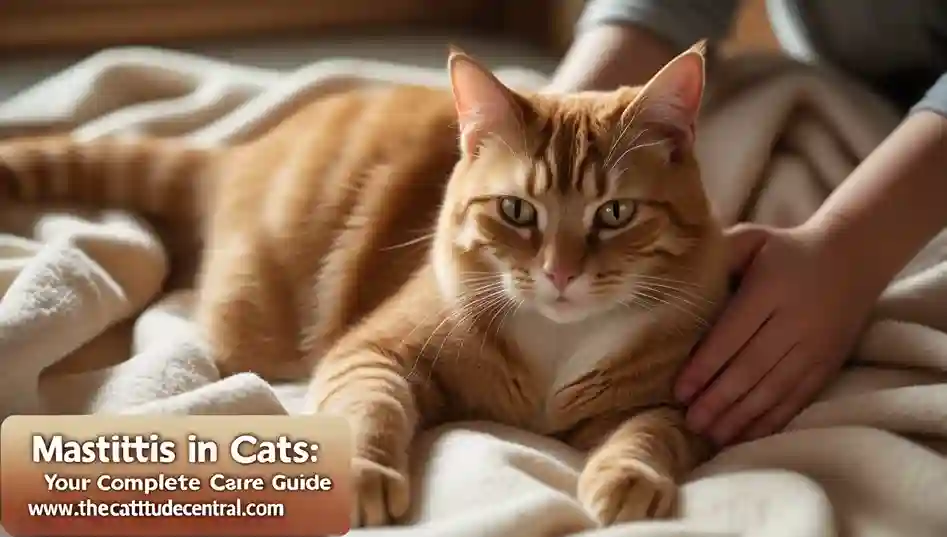Cats, with their enigmatic and independent nature, often face situations that spike their anxiety, from vet visits to grooming sessions or long car rides. For many pet owners, cat sedatives offer a practical solution to help their furry companions stay calm and relaxed. Whether it’s a prescription medication from a veterinarian or a natural remedy available on Amazon, understanding how feline sedatives work and when to use them is crucial for responsible pet care.
This comprehensive guide dives into the world of feline sedatives, covering their types, uses, safety considerations, and top products to ensure your cat’s well-being.
Why Cats Need Sedatives
Cats can become stressed or anxious in various scenarios, such as:
- Veterinary visits: Unfamiliar environments and handling can trigger fear.
- Grooming or nail trimming: Some cats resist physical touch, leading to aggression or distress.
- Travel: Car rides or flights can be overwhelming for felines.
- Fireworks or loud noises: Sudden sounds can cause panic.
Cat sedatives are designed to reduce anxiety, fear, and stress by calming the central nervous system. They promote a safer, more comfortable experience for both the cat and the owner, preventing potential injuries or trauma during stressful situations. However, using feline sedatives responsibly under veterinary guidance is essential to ensure your pet’s safety.
Types of Cat Sedatives
Cat sedatives come in two primary categories: prescription medications and over-the-counter (OTC) or natural remedies. Each type has its own applications, benefits, and risks.
Prescription Cat Sedatives
Prescription feline sedatives are typically more potent and are administered under strict veterinary supervision. These are often used for situations requiring significant sedation, such as surgeries or intense anxiety management.
Injectable Sedatives
Injectable feline sedatives are fast-acting and administered by veterinarians in clinical settings. Common options include:
- Medetomidine and Dexmedetomidine: These alpha-2 adrenergic agonists induce deep sedation for procedures like dental cleanings or minor surgeries. They are highly effective but require professional administration due to potential side effects like respiratory depression.
- Other Injectables: Drugs like ketamine, butorphanol, or fentanyl are often used in combination for tailored sedation protocols. These are only safe when monitored by a vet with access to antidotes and oxygen supplementation.
Oral Prescription Sedatives
Oral feline sedatives are less intense than injectables and can sometimes be given at home under veterinary guidance. Examples include:
- Alprazolam (Xanax): Primarily used for anxiety, this has a mild sedative effect and is prescribed for situational stress.
- Gabapentin: Commonly used for pain and anxiety, it’s effective for calming cats before vet visits or travel.
- Trazodone: This antidepressant has sedative properties and is often used for short-term anxiety relief.
These medications require precise dosing based on the cat’s weight and health condition. Always consult a veterinarian before administering prescription feline sedatives.
Over-the-Counter and Natural Cat Sedatives
For milder anxiety, OTC and natural cat sedatives are popular among pet owners. These are less potent but can be effective for low-stress situations. Some options available on Amazon include:
- Feliway Classic Cat Calming Diffuser: This product mimics feline pheromones to create a calming environment. It’s ideal for home use during stressful events like moving or introducing a new pet.
- Pet Naturals of Vermont Calming Chews for Cats: These contain L-theanine and thiamine, natural ingredients that promote relaxation without drowsiness.
- VetriScience Composure Chews: These treats combine L-theanine, colostrum, and other calming agents to reduce stress in cats.
Natural feline sedatives are generally safer for home use but may have a subtler effect compared to prescription options. Always check with a vet before introducing new supplements, especially if your cat is on other medications.
When to Use Cat Sedatives
Feline sedatives are not a one-size-fits-all solution. They should be used strategically to address specific situations where stress or anxiety is unavoidable. Common scenarios include:
- Veterinary Procedures: Sedatives make exams, vaccinations, or surgeries less traumatic.
- Grooming Challenges: Cats that resist brushing or nail clipping benefit from mild feline sedatives to reduce aggression.
- Travel Anxiety: Long car rides or flights can be eased with feline sedatives to prevent distress.
- Behavioral Issues: In cases of extreme stress or aggression, sedatives can help manage reactions while working on long-term behavior modification.
However, feline sedatives should never replace proper training or socialization. Addressing underlying causes of anxiety through desensitization or environmental changes is equally important.
Safety Considerations for Cat Sedatives
Using cat sedatives requires caution to avoid adverse effects. Here are key safety tips:
- Veterinary Guidance: Always consult a vet before using any feline sedative, especially prescription medications. Incorrect dosing can lead to serious side effects like respiratory issues or lethargy.
- Monitor Health Conditions: Cats with heart, liver, or kidney issues may not tolerate certain feline sedatives. Disclose your cat’s medical history to the vet.
- Avoid Overuse: Sedatives should be used sparingly to prevent dependency or tolerance.
- Check for Interactions: Some feline sedatives may interact with other medications or supplements. For example, combining Benadryl with certain prescription drugs can be dangerous.
- Observe Side Effects: Watch for signs like excessive lethargy, vomiting, or breathing difficulties after administering a sedative. Contact your vet immediately if these occur.
How to Administer Cat Sedatives Safely
Administering cat sedatives requires care to ensure your pet’s comfort and safety. Here’s a step-by-step guide:
- Consult a Veterinarian: For prescription feline sedatives, get a tailored dosage based on your cat’s weight and health. For OTC options, confirm suitability with a vet.
- Follow Dosage Instructions: Never exceed the recommended dose. For example, Pet Naturals Calming Chews typically suggest 1–2 chews per day for a 10-lb cat.
- Time Administration: Give sedatives 30–60 minutes before the stressful event to allow them to take effect. For example, administer Feliway spray or diffuser well before a vet visit.
- Monitor Your Cat: Stay with your cat after giving a sedative to observe their behavior and ensure they’re responding well.
- Combine with Comfort: Pair feline sedatives with a cozy blanket or familiar toy to enhance the calming effect.
Alternatives to Cat Sedatives
While cat sedatives are effective, non-medication strategies can also help manage feline anxiety:
- Behavioral Training: Gradually desensitize your cat to triggers like car rides or grooming tools.
- Environmental Enrichment: Provide scratching posts, toys, or perches to reduce boredom-related stress.
- Pheromone Therapy: Products like Feliway mimic natural calming signals without medication.
- Calming Music: Classical music or cat-specific playlists can soothe anxious felines.
Combining these methods with feline sedatives can create a holistic approach to stress management.
FAQs About Cat Sedatives
Based on trending questions from Google and pet forums, here are answers to common queries about feline sedatives:
Are cat sedatives safe for all cats?
Not all feline sedatives are safe for every cat. Cats with pre-existing conditions like heart or kidney disease may be at risk. Always consult a vet to ensure the sedative is appropriate for your cat’s health.
Can I use human sedatives like Benadryl for my cat?
Benadryl (diphenhydramine) is sometimes used as a mild cat sedative, but only under veterinary guidance. Incorrect dosing can cause toxicity. Never use human medications without professional advice.
How long do cat sedatives last?
The duration depends on the type. Prescription cat sedatives like gabapentin may last 6–12 hours, while OTC options like Feliway or calming chews may provide relief for 4–8 hours.
Can I give my cat sedatives for travel?
Yes, cat sedatives are commonly used for travel anxiety. Products like Pet Naturals Calming Chews or prescription gabapentin can help. Administer 30–60 minutes before travel and test the sedative beforehand to gauge your cat’s reaction.
Are there natural alternatives to cat sedatives?
Yes, natural feline sedatives like Feliway, L-theanine-based chews, or chamomile supplements can be effective for mild anxiety. These are available on Amazon and are generally safer for home use.
Conclusion
Cat sedatives are a valuable tool for helping your feline friend navigate stressful situations, from vet visits to travel or grooming. Whether you opt for prescription feline sedatives like gabapentin or natural options like Feliway, always prioritize safety by consulting a veterinarian and following dosing guidelines.
Products available on Amazon, such as Pet Naturals Calming Chews or VetriScience Composure, offer accessible solutions for mild anxiety, while prescription medications handle more intense cases. By combining feline sedatives with behavioral strategies and a supportive environment, you can ensure your cat stays calm and comfortable.
For more information or to explore cat sedatives, visit trusted resources like Cats.com or consult your veterinarian. Your cat’s well-being is worth the effort!
Sources



